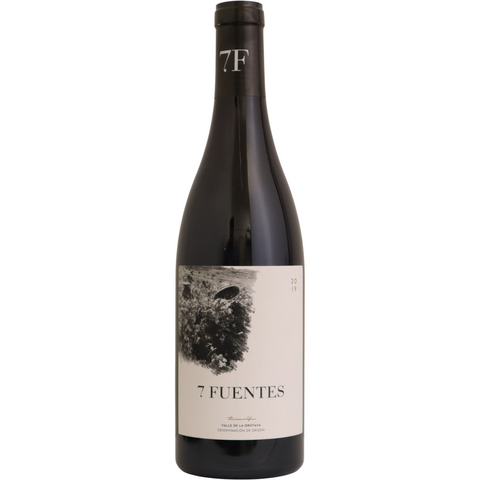
2019 Suertes del Marqués Valle de la Orotava "7 Fuentes", Canary Islands, Spain
It showcases the minerality of the Orotava reds, with telltale aromas of volcanic ash, black peppercorns and dry roses. It has complexity that goes beyond entry-level. This is a wine that overdelivers for the price, and it is highly recommended.
ABOUT THIS WINE
This is a blend of 90% Listan Negro and 10% Castellana Negra. The grapes come from 35 different plots ranging in age from 10 -180 years old. The old vines are cordon trenzado and the younger vines are on trellis. All work is done by hand. The old vines are ungrafted and pruned to cordon trenzado or "braided". The estate follows organic practices. Wild yeast fermentation in concrete tanks with manual pigage in a concrete tank with minimal sulphur.
ABOUT THIS PRODUCER
Visiting the vineyards of Suertes del Marqués is like going back in time. The area is Phylloxera free and so the vines are pie franco (own-rooted) and extremely old, with some potentially over 200 years! Many of the vines are trained using a unique method in this area called Cordon Trenzado where the vines are spread out in long braids of wood, some up to 15-20 feet from the mother trunk! The varietal mix here is like a treasury of lost and little known grapes: Listan Negro and Blanco, Malvasia Rosado, Vijariego, Baboso Negro and more, about 80% red and 20% white.
Given the extremely special nature of what Suertes del Marqués possesses, proprietor Jonatan Garcia Lima works all his vineyards organically, all by hand, and with the utmost care and respect for nature and history. And from these amazing and unique vineyards, he endeavors to make fresh, tensile, and mineral-driven wines that showcase the volcanic soils and the native varieties. To achieve his objective, through years of experimentation and refinement, he has divided up the slope into parcels to achieve a hierarchy (much like a slope in Burgundy) as well as a unique vineyard signature for each of his top Cru wines. These various parcels have names like El Ciruelo, El Chibirique, El Esquilon, and La Solana. The parcel wines are also grouped by soil type, with gold capsules indicating more "sandy" soils and silver capsules more clay over the bedrock of volcanic subsoils.
To achieve the utmost purity and refinement in the wines, all work in the cellar is done with a minimum of interference. This includes all indigenous yeast fermentations, the use of neutral large oak barrels with minimal racking, and added sulphur during the élévage. He is also a believer in using a decent percentage of whole clusters in fermentation for these native varietals, having been inspired by tasting and visiting areas like Burgundy and the Rhone Valley. At bottling, there is also a minimum of filtration, with the wines just passing through a large screen to remove any unwanted remnants, stems, grape skins, etc.
Details:
| Grape(s) | Listan Negro, Castellana Negra |
| Farming | Organic |
